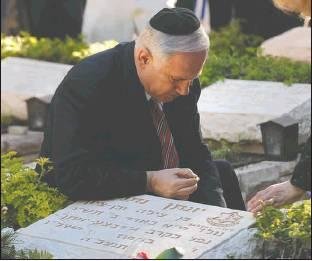A mission into the heart of darkness
Chronicle Editor Emeritus Jerry Bellune shares with you his adventures in the Holy Land. The experience gave him a greater appreciation of shared U.S and Israeli values.
TJerusalem, Israel
…
This item is available in full to subscribers.
Subscribe to continue reading. Already a subscriber? Sign in
Get 50% of all subscriptions for a limited time. Subscribe today.
Please log in to continueNeed an account?
|
A mission into the heart of darkness
Chronicle Editor Emeritus Jerry Bellune shares with you his adventures in the Holy Land. The experience gave him a greater appreciation of shared U.S and Israeli values.
TJerusalem, Israel
he dramatic 1976 Israeli rescue mission seems more like fiction than reality.
That’s why it has captured the imagination of authors, military theorists, filmmakers and people like us.
It continues to spark retelling and analysis at every significant anniversary.
A new exhibit of previously unseen relics of the raid has been opened at the Rabin Center in Israel.
Despite all the movies, books, and exhibits, there are many lesser-known details and subplots of the rescue that are surprising.
A commando named Uri told me of his own personal experience in the rescue in Jerusalem six years later.
His last name was not revealed for security reasons.
The mission plan
In preparing for the rescue of 94 hostages in Uganda, 100 hand-picked commandoes learned that an Israeli Defense Forces transport plane would fly them 2,500 miles into the heart of darkness — a small airport in a tiny African country none of them had ever visited and many of them had never even heard about.
Their job was to overcome armed resistance and bring home the hostages whose Air France flight had been hijacked by Palestinian and German terrorists.
The kidnapping had been arranged weeks, maybe even months, in advance with the support of Ugandan strongman Idi Amin.
The commandoes would have 90 minutes on the ground in Entebbe. They had to subdue any Ugandan troops, destroy any weapons that could disable their aircraft, free and bring the Jewish hostages on board, take off and fly home.
Leadership caliber
At least four Israeli Prime Ministers or future Prime Ministers played a role in the rescue at Entebbe.
Yitzhak Rabin was the serving Prime Minister who signed off on the rescue.
He had misgivings, knowing the danger and hoping a diplomatic settlement could be reached. But he came to agree with his Defense Minister, future Prime Minister Shimon Peres, to take the military option.
Ehud Barak, another future Prime Minister, was dispatched to Kenya, where he made the arrangements for refueling the Hercules aircraft on the way home.
The rescue operation was later renamed Operation Yonatan for its commander, Yonatan Netanyahu.
He was the older brother of Benjamin “Bibi” Netanyahu, a man destined to become Prime Minister.
Bibi’s political career was born, or at least boosted, by the legendary status of his brother’s death in the raid.
Like John Kennedy, whose older brother Joe was the rising family star, Bibi’s older brother was the one picked for future greatness.
What is less known is that Bibi was a member of Sayer-et Matkal, or “the Unit,” which conducted the raid.
He was denied the chance to go as it was Israeli policy that no two brothers be risked in a single operation.
The military option
Who persuaded Prime Minister Yitzhak Rabin to favor the military option?
Taking such a bold step would be a leap of faith.
Yoni Netanyahu’s younger brother Iddo, in his book, “Entebbe: A Defining Mo-complete self-confidence had a strong influence.”
Peres’s 45-minute meeting with Yoni fortified his belief in a military option, which he recommended to the Prime Minister.
Hostage intelligence
Planning and preparation for the rescue was given a lift from an unexpected source – one hostage who had been released.
She also had a connection to an Israeli military hero almost 40 years later.
Ninette Morenu was released by the Entebbe hijackers June 29, 1976, due to her non-Jewish sounding name. Her keen powers of observation enabled her to help the commandoes construct a detailed diagram of the layout of the terminal.
In the Second Lebanon War 30 years later, Emmanuel Morenu, Ninette’s grandson and a member of Sayeret Matkal – the commandoes who rescued the hostages – was killed.
The Times of Israel quoted a Mossad source describing the grandson as “one of the best officers in the history of Sayeret Matkal.”
The flight was so bumpy it sickened the soldiers. One was so weak he had to stay behind and was replaced by Amos Goren. Yoni brought Amos up to speed on the plan by sketching the terminal on the back of an airsickness bag, now part of the Rabin Center exhibit. ment in the War on Terrorism,” described a decisive moment. The personal assurance of Yoni led Defense Minister Shimon Peres on Friday of the fateful week of the raid to go with it.
“’My impression was one of exactitude and imagination,” Peres said. “Yoni’s
Other items that may interest you










Comments
No comments on this item Please log in to comment by clicking here